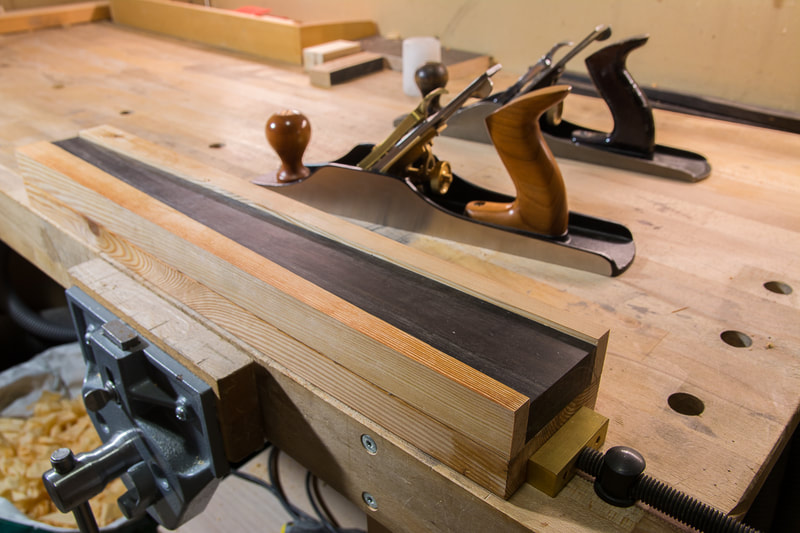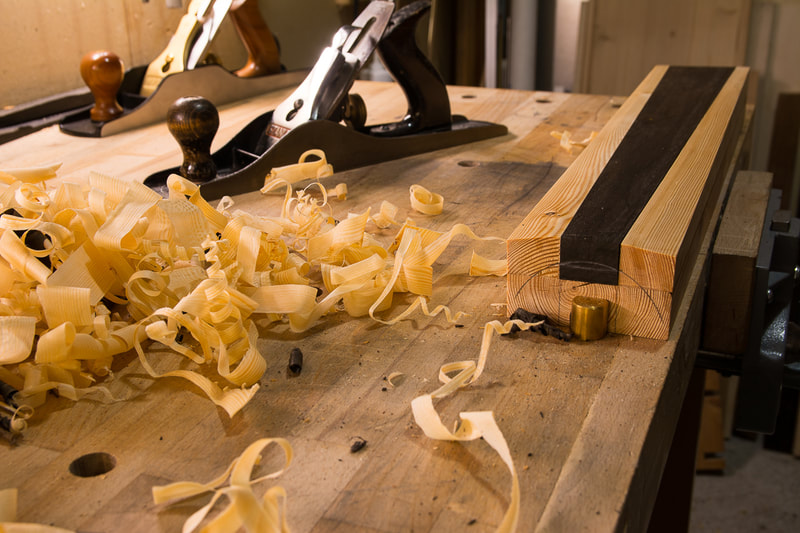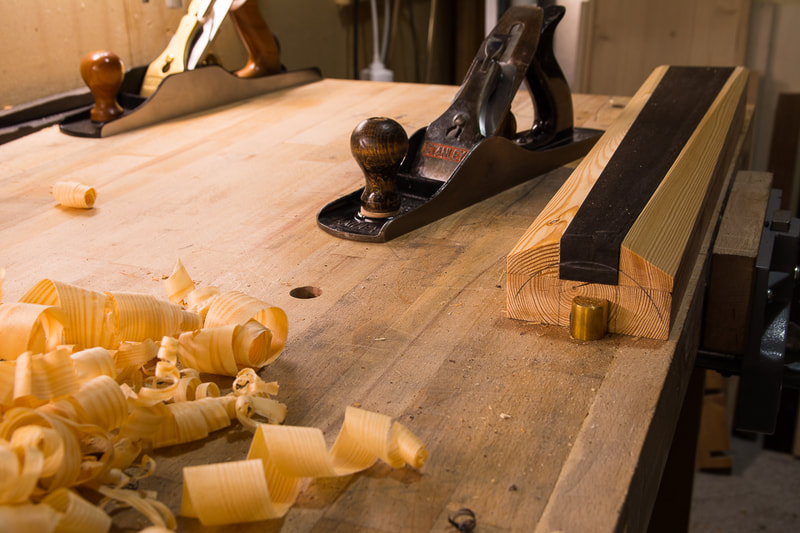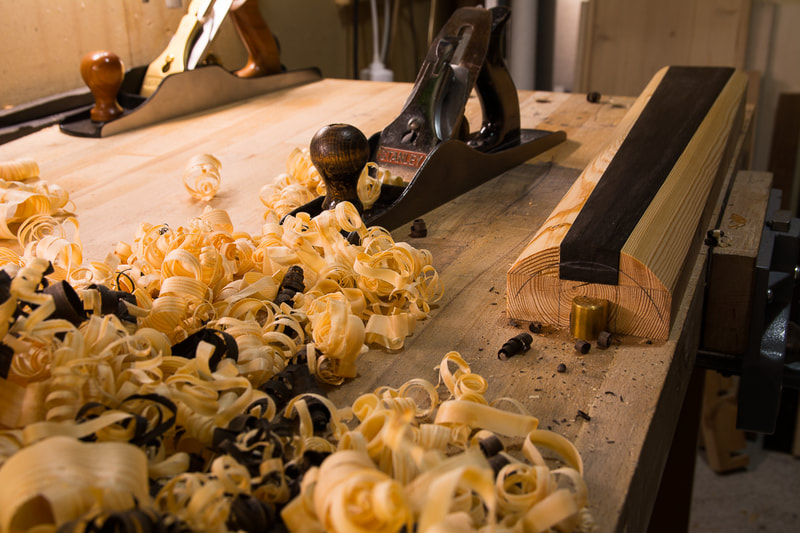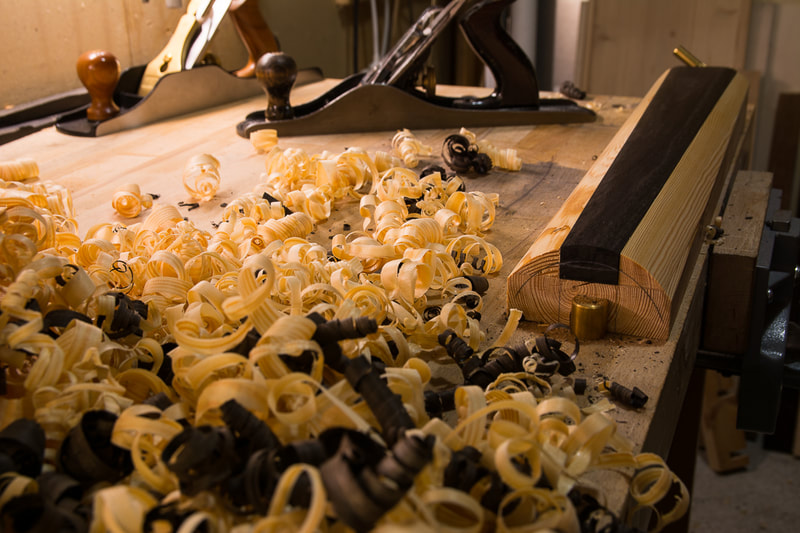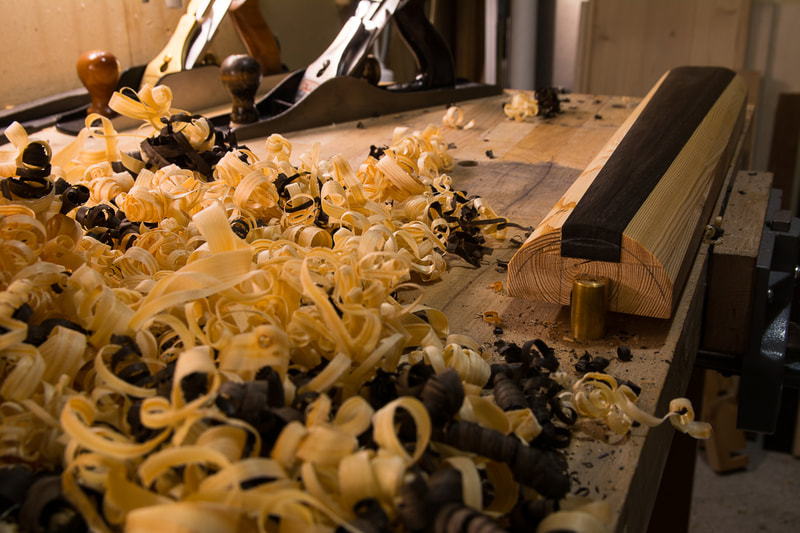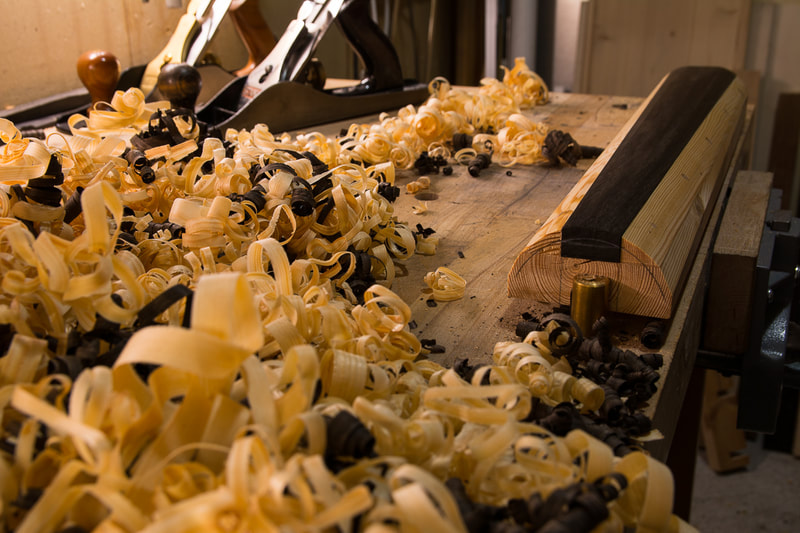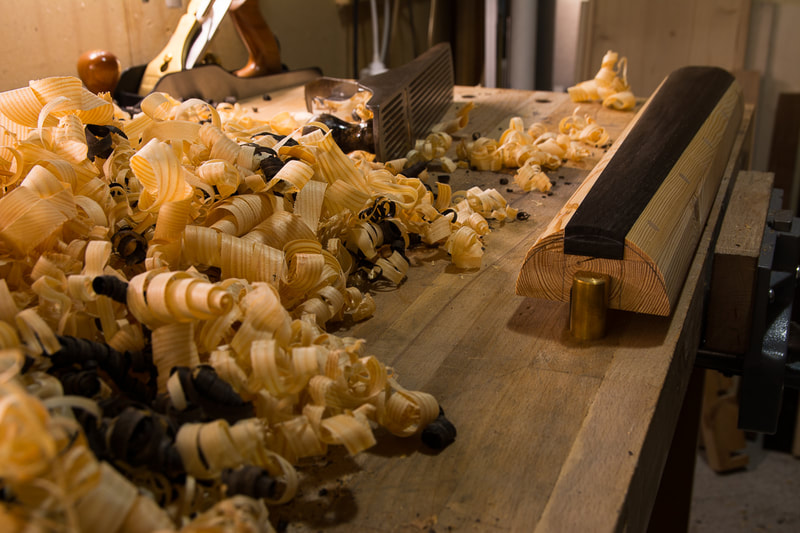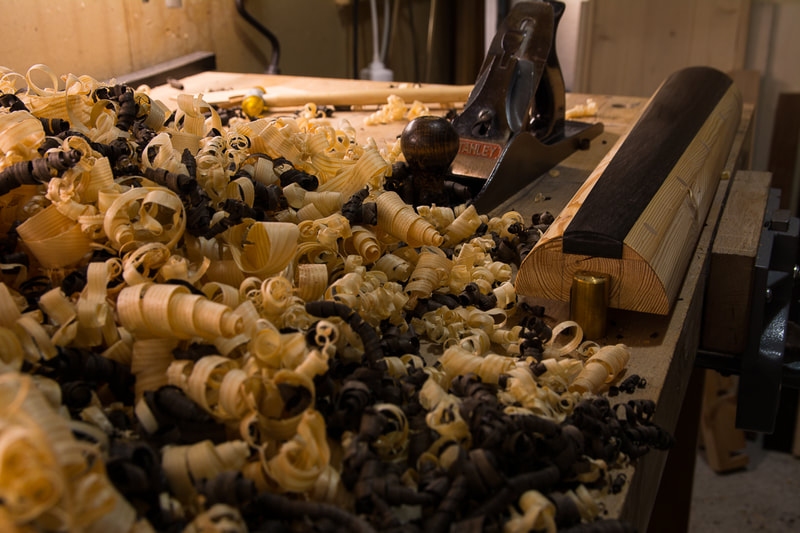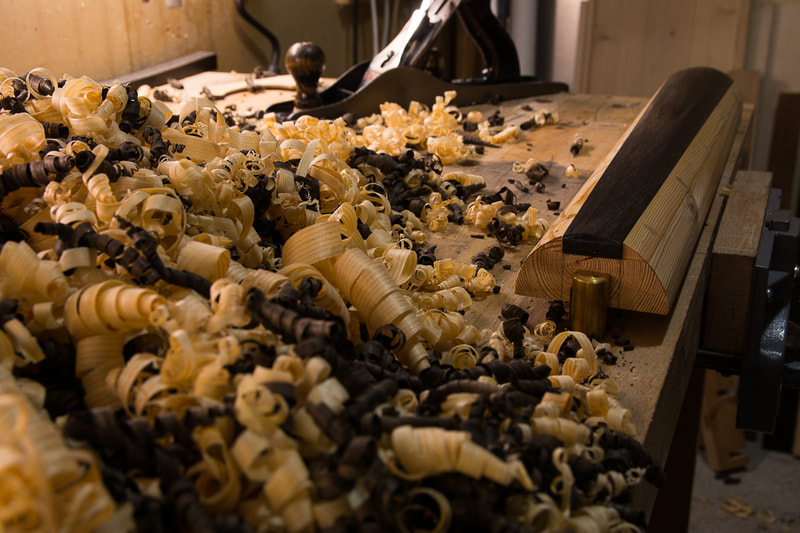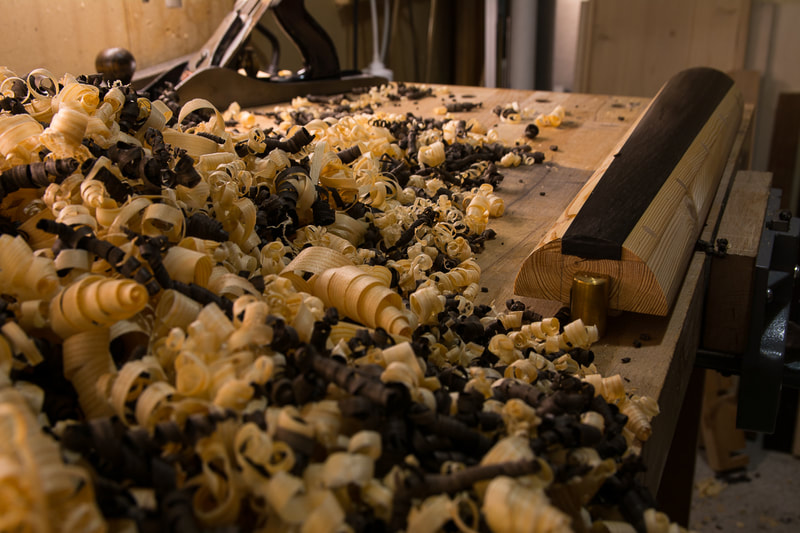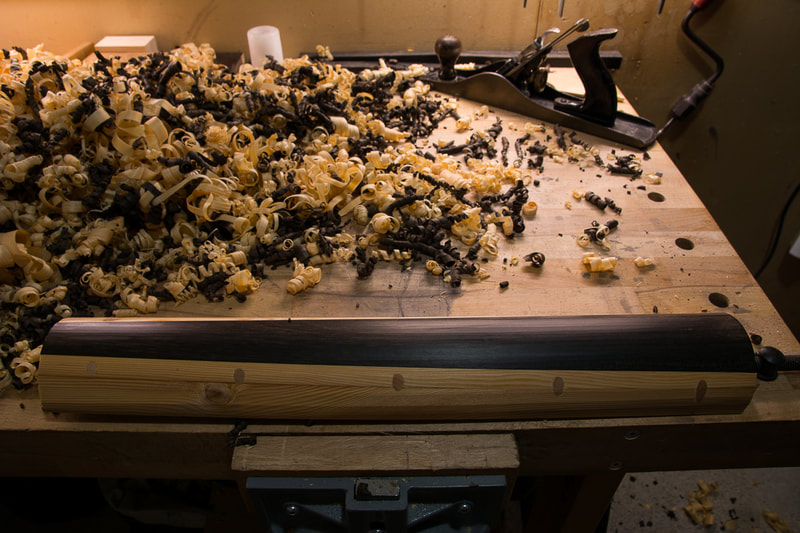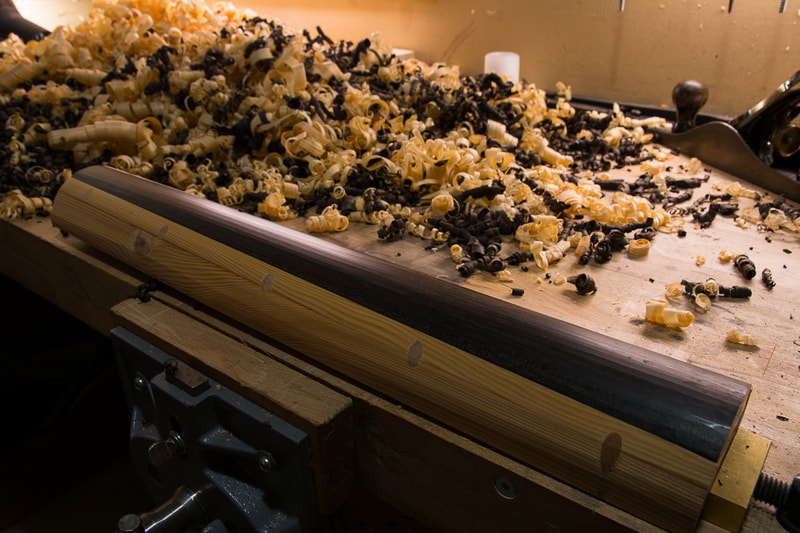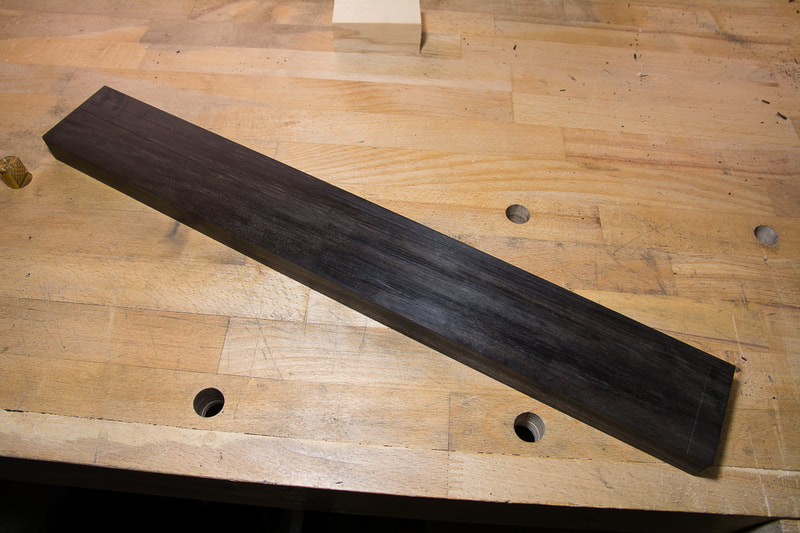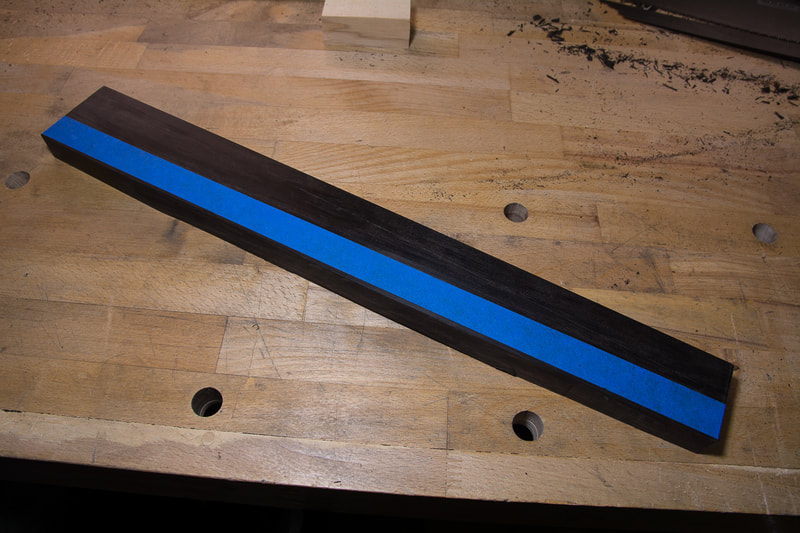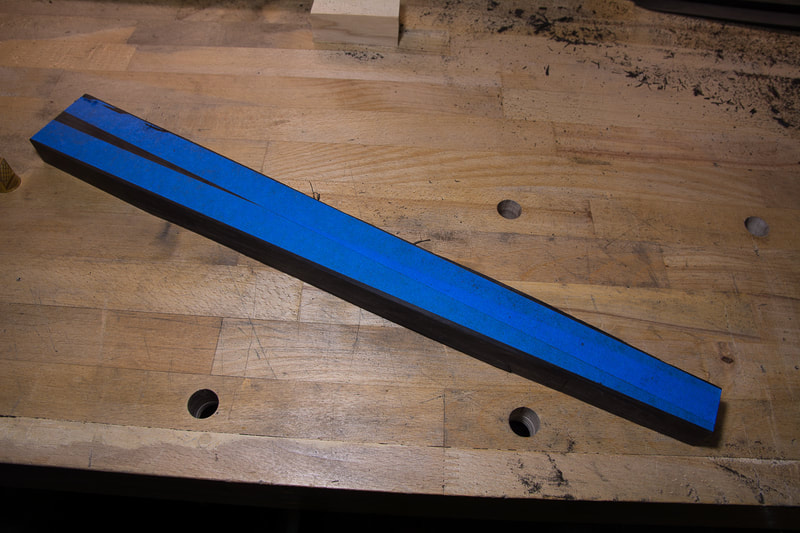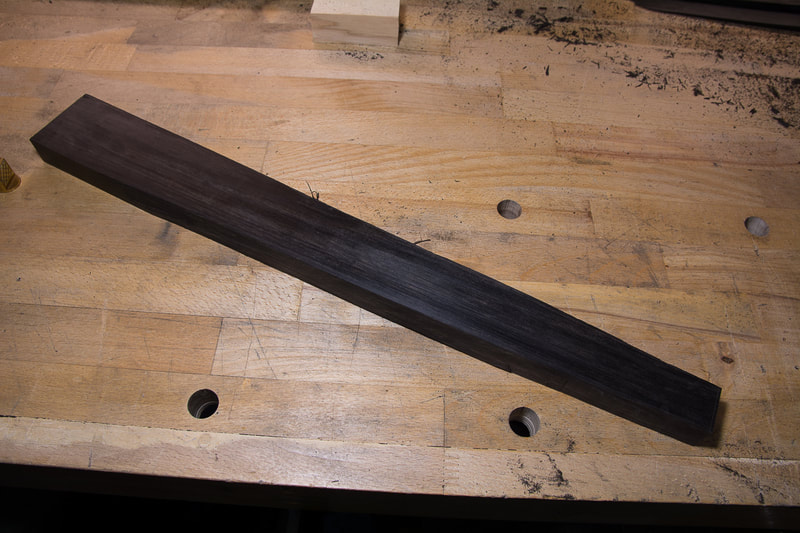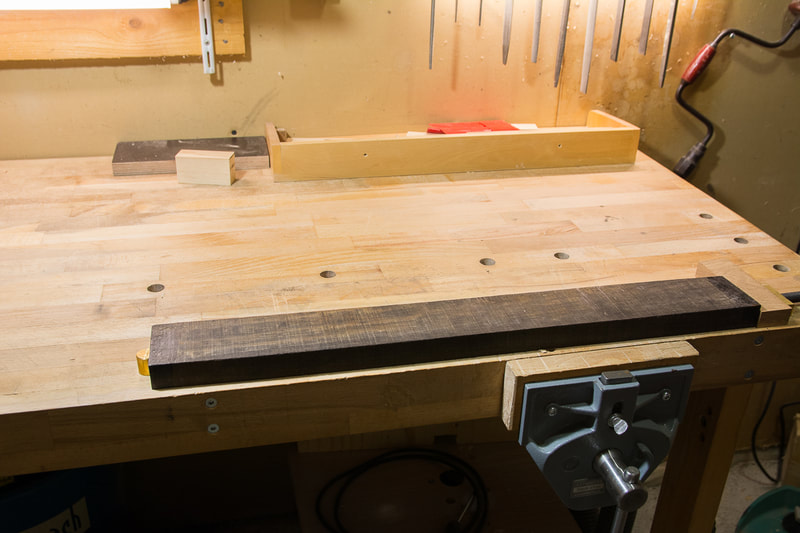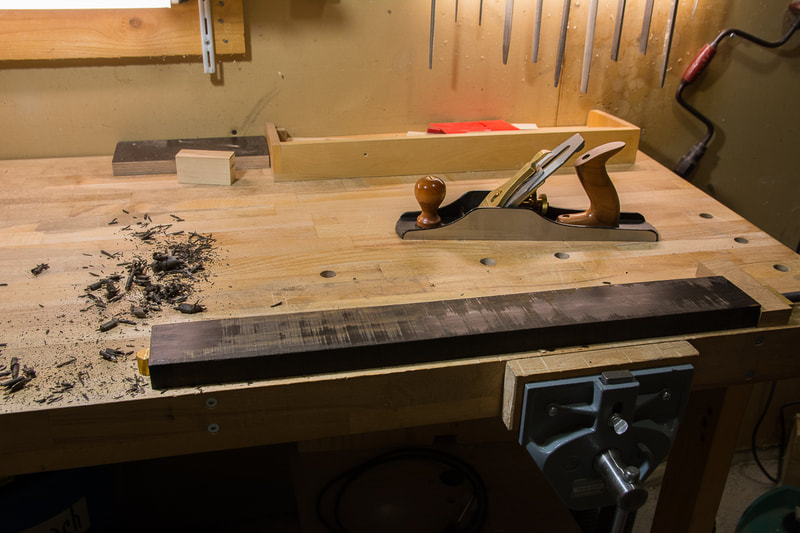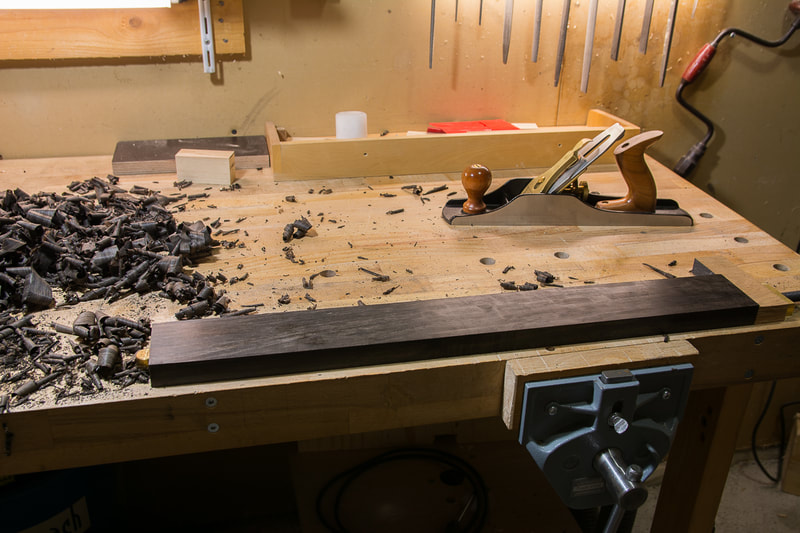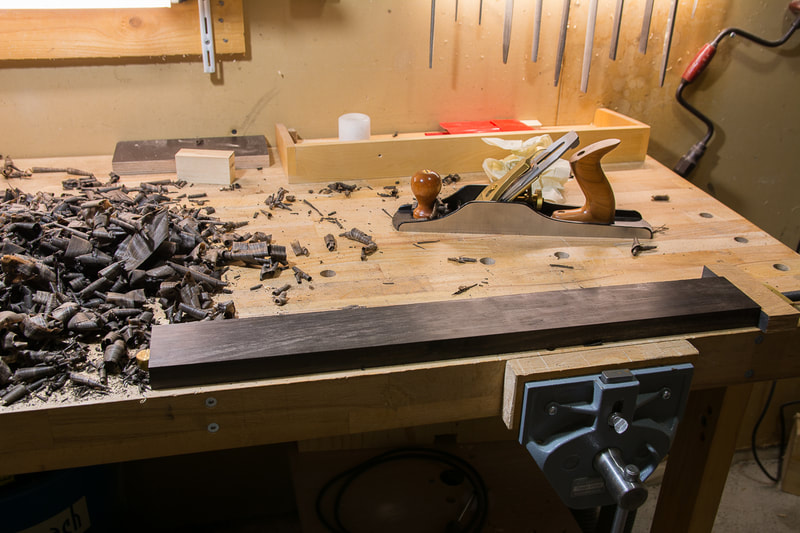|
Finally some real progress again. I had cut the fingerboard to approximate width already which made it a little difficult to plane the top surface to the correct curvature. So I decided to build a jig to help hold the fingerboard while planing. It turned out great and I think I would also next time do it this way. The fingerboard is still a little too thick, but it is pretty close to final thickness. I'll reduce it by 1 or 2 mm still.
I have been wondering about the geometry of the fingerboard. The curvature of the fingerboard is constant along it's length, basically the surface of a cylinder. If the edge has constant thickness, as is usual, there must be some scoop along the length of the fingerboard. Instead of a cylinder the the top is the surface of a bent tube or a banana. MJ Kwan has a nice post about the fingerboard geometry on her blog, fingerboard-geometry.
0 Comments
I decided to go forward with the chosen dimensions I wrote about last time. Today I marked the lines on the piece of ebony and used a saw and a plane to get to ~1 mm from the line. The blue tapes are there just to mark the lines as both knife and pencil lines are difficult to see on the dark wood.
The fingerboard is made of ebony. I have never worked with ebony before. It is very heavy and hard wood. I had decided to make the fingerboard from scratch. It is usual to start with a prepared blank which is almost ready. I couldn't find 1/2 fingerboard and also wasn't quite sure at the time which size I would need it to be so I bought a block of wood for the job.
I am maybe not quite ready with the neck to really start with the fingerboard. I have had difficulties figuring out the right dimensions for the fingerboard though. So far this has been the trickiest part in building a 1/2 cello. There just doesn't seem to be too much information around. It also seems to be one of the things which scales least linearly with the other dimensions. The fingerboards on smaller cellos are proportionally wider than on bigger ones. The width of the fingerboard obviously affects the width of the neck which is why my progress has been slow recently.I have contacted some professional luthiers to help me on this but so far without success. But I think I have figured this out now. The measurements for 1/2 cello I did find seemed to be too far off from the normal scaling that I didn't want to trust them. Now I think I will go with what I have. I will take the length of the fingerboard from what I get when I scale the one from Strobel down by 86.8 % as I have done until now. Scaling the width similarly would result in width at the lower end of 56 mm. This is less then what Baker lists in her book for 1/4 cello (58 mm). The width of the fingerboard in my son's current cello is only 48 mm. Which is a lot less than what Baker has. For a 1/2 cello Baker lists a lower end width of 59 mm and upper end width of 29 mm. This is also what I find in www.alangoldblatt.com/specs/Cello.pdf. However Baker and Goldblatt have very different lengths for a 1/2 cello finger board, 487 mm and 510 mm respectively. Strobel has in his "Useful Measurements for Violin Makers" a length of 500 mm but he doesn't list any widths. Confusing. Anyways, I am now decided. I will take the (consistent) widths of 29 mm at the upper and 59 mm at the lower end. The length will be 503 mm as scaled down from Strobel's 1/1 cello. If anything these will be a wider than necessary and then I can always remove some material later if necessary. With these widths, the width of the fingerboard at neck foot will be more or less that of a 1/1 cello. It was great to plane the ebony blank flat on one face. The surface is incredibly smooth. It will be quite a bit of work to get this finished. |
AuthorMy son is outgrowing his cello soon. Could there be a better reason to learn how to make one :). Archives
April 2021
Categories
All
|
